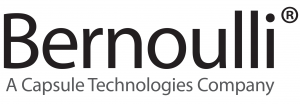About admin
This author has yet to write their bio.
Meanwhile lets just say that we are proud admin contributed a whooping 92 entries.
Entries by
CE accredited webinar: Anatomy of a smart alarm: Intervention based on adverse trends
January 23, 2018 in featured /by adminJoin us for a CE
accredited webinar:
Anatomy of a smart alarm:
Intervention based on adverse trends
webinar signup mockup
January 19, 2018 /0 Comments/in Frontpage Article /by adminAnatomy of a smart alarm:
Intervention based on adverse trends
The Case for Continuous Clinical Surveillance
January 5, 2018 in Blog /by adminReducing false alarms has been the subject of countless meetings, lectures and peer-reviewed studies. Many approaches have been identified for reducing alarms in high-acuity settings. For example, Görges [2] showed that a 14-second delay before alarm presentation would reduce non-actionable alarms by 50%. A 19-second delay would reduce this further to 67%.
A Technology Safety Net that Improves Patient Safety
January 3, 2018 in Blog /by adminThe increasing complex state of health care and compounding nursing vacancies are playing a role in un-achieved outcomes and putting patients at risk. This is the reality that most hospitals face today. More critically-ill patients are seeking care and are being cared for by fewer clinicians.
webinar signup mockup
December 29, 2017 /0 Comments/in Uncategorized /by adminBernoulli White Paper | Preventing Respiratory Depression
November 22, 2017 in Brochures and Literature, White Papers /by adminWhat Real-Time Data Could Have Done for These Patients
November 14, 2017 in Blog /by adminThe concepts behind smart alarms and use of real-time data to make better decisions are not new. Many people have had their experiences in the field of medicine and medical informatics but not all people and organizations have acted upon these experiences. Bernoulli is one organization that has.
Bernoulli Health Collaborates with GE Healthcare to Enable Interoperability
November 14, 2017 in News, Press Releases /by adminBernoulli Smart Alarms & Surveillance: Applying Analytics in Real-Time Whitepaper
November 1, 2017 in Brochures and Literature /by adminResearch and independent findings suggest that improved surveillance and increased patient safety can be achieved through the use of continuous monitoring. Furthermore, monitoring of multiple parameters to assess their interrelationships is an important capability that Bernoulli brings through the Bernoulli One platform, as multiple independent measurements can be correlated and associated with user-defined clinically-significant criteria […]

